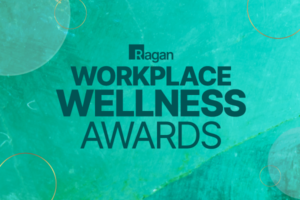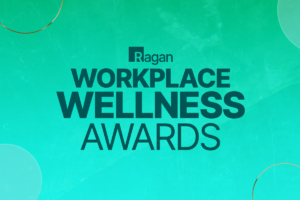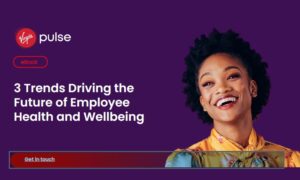Why re-onboarding employees is effective, five tips for prioritizing mental health in spring and more
Curating the week in wellness March 21-25, 2022.

Hello, wellness pros!
We are here with a collection of thought-provoking articles, tips and takeaways for the week.
Please get in touch with any ideas, suggestions or feedback on how we can serve you better or cover topics that are top-of-mind at your organization. Email: kaceyl@ragan.com.
1. When to re-onboard current employees.
Much has been said about the need to update the new employee onboarding process since the start of the COVID-19 pandemic and Great Reshuffle, but what about re-onboarding existing employees? In an interview with Employee Benefit News, Sarah Britton, senior manager of employee operations at recruiting software company Lever, suggests that such a tactic — providing a refresher course on the company’s policies, goals and other information — illustrates an investment in employees and their experience.
“If someone’s been here for five years, are they still aware of all the resources we have to offer?” she asks. “Do they remember our origin story? Onboarding is a way to maintain engagement and connectivity with our existing employees.”
The key to an effective re-onboarding, Britton says, is to put a strategic plan in place that considers meaningful ways to hear and address employee concerns. Conducting stay interviews to learn employee needs and areas of improvement is one approach, along with ensuring managers and leaders are trained to have meaningful conversations with direct reports and employees.
2. Five tips to help prioritize mental health this spring and beyond.
Spring has officially arrived, and Mental Health First AID USA notes that seasonal changes can have an impact on people’s mental health. To assist with the transition, the Mental Health First Aid at Work organization shares five tips that can help with prioritizing mental and physical well-being.
- Take the time to self-evaluate and identify your feelings. Acknowledging emotions can make them feel less overwhelming, and that recognition can be the first step in a plan to cope.
- Give yourself space to grieve. While spring is often affiliated with rejuvenation, it is important to recognize what has been lost — even if it’s the loss of normalcy since the start of the COVID-19 pandemic.
- Make the most of spring activities you can safely and comfortably do by yourself or with others.
- Don’t romanticize your typical plans. There may be more pressure and/or stress to head out to do things with the arrival of warmer weather, but find creative ways to adapt plans or begin new traditions that remove the stress in favor of adding more meaning.
- Practicing gratitude is associated with a host of mental and physical benefits and is even shown to decrease depression and anxiety.
3. Should your 401(k) options include ESG investment?
As employees become more conscious about where they as choose to spend their money, they will also become savvier investors. In an article for Benefits Pro, Stephanie Ashton, MBA, manager of corporate social responsibility at Saturna Capital writes: “As individuals become more thoughtful about how their resources and savings are deployed, an employees retirement savings will undoubtedly become part of the equation.”
Mutual funds that complement an investor’s religious beliefs have long been available. Mutual funds focused on investing in socially responsible companies — also known as environmental, social and governance investing — are increasingly available. Retirement plan sponsors can develop a range of offerings to satisfy employee investors’ social preferences or faith-based requirements.
Ashton says that offering faith-based and ESG investment options is like adding gluten-free and vegetarian pizza to the company pizza order. Will it be for everyone? No, but those who want the options will appreciate their employer’s thoughtfulness.
4. Loss of momentum on DE&I beyond the hiring process, survey shows.
A survey of human resources professionals by EVERFI and Greenhouse found that 69% of companies believe inclusive hiring and onboarding practices have a positive impact on a company’s brand and promote greater employee well-being. However, 54% of companies indicated they have not eliminated biased language from their job postings, while 64% of respondents report they are not analyzing hiring data related to diversity, equity and inclusion (DE&I).
DE&I remains an issue elsewhere, too — only 24% of companies offer DE&I or bias-related training specifically to managers. Most surveyed (80%) also said their companies do not evaluate leaders around DE&I efforts or support.
“If companies want to be competitive, attracting top talent while also retaining employees that they worked so hard to recruit and hire, they must do more than simply make statements about DEI,” says Elizabeth Bille, senior vice president, workplace culture, EVERFI. “They must also focus on employees’ experiences after day one on the job.”
5. How to make an off-site retreat work for employees.
As many companies hired remote employees during the COVID-19 pandemic, some teams are more geographically spread out than before. As travel continues to resume and COVID-19 cases continue to drop, the timing may be right to host a company or team-wide off-site experience to rebuild a sense of community.
But with employee burnout high and many lingering uncertainties around COVID-19, how do you ensure such a retreat actively engages and excites employees? In a column for CEOWorld Magazine, Sasha Hoffman shares nine tips for making an off-site experience valuable.
- Set aside a large chunk of time for relationship-building.
- Ensure that the event’s location fosters creativity without being too familiar.
- Integrate wellness activities into the schedule.
- Provide a “COVID-19 concierge” to arrange tests for travel and communicate protocols.
- Add perks like room upgrades, companion passes or travel bonuses where possible to make the trip a positive experience for employees.
- Bring support infrastructure, like the IT desk or HR, along so that employees can take care of getting a computer upgrade or training session while already together.
- Make the retreat longer and less structured so employees can handle day-to-day tasks while also being able to sign off for scheduled activities.
- Invite coaches to host modules on wellness topics.
- Be proactive about childcare so that working parents can have that support.






